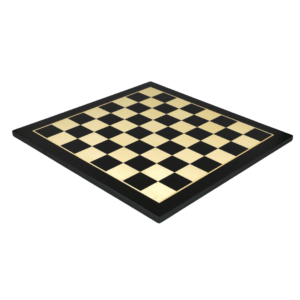
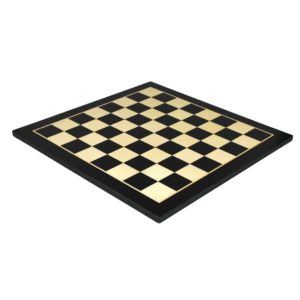
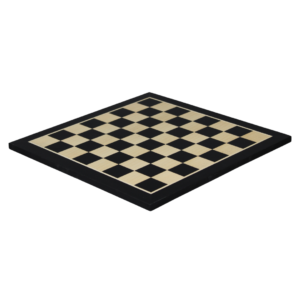

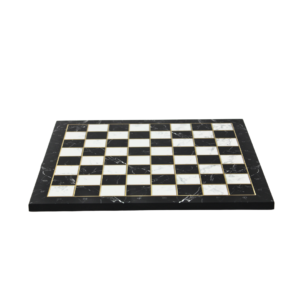
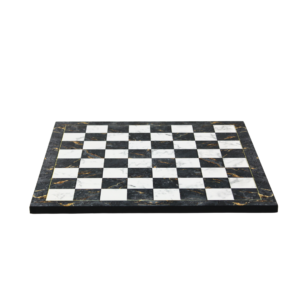



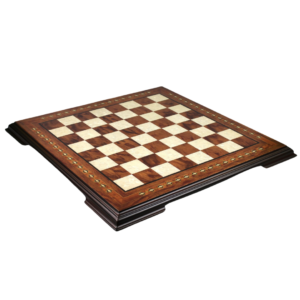
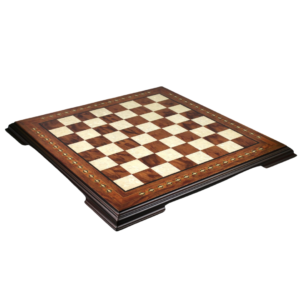




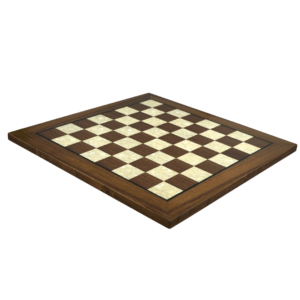
Chess is an ancient and timeless game, with its roots tracing back to India in the 6th century. It has evolved into a global pastime enjoyed by people of all ages and skill levels. A central part of the chess experience is the board on which the game is played. Among the variety of chess board materials available today, wooden chess boards remain the most revered, combining aesthetic elegance with unparalleled durability. In this comprehensive guide, we will explore everything you need to know about wooden chess boards, from the different types of wood used to the sizes, care tips, and how to choose the right one for your playing needs.
Wooden chess boards are often seen as the gold standard when it comes to choosing a chess board. Their classic look and feel add an air of sophistication to the game, elevating the experience beyond just a simple match. The natural grain and texture of wood give each board a unique character, making it a personal and long-lasting possession. Moreover, wooden boards have a tactile warmth that adds to the sensory enjoyment of chess, making them far more enjoyable to play on compared to synthetic materials like plastic or vinyl.
Wooden chess boards can serve as a stunning centrepiece in your home or office, offering an appealing balance between functionality and artistry. The craftsmanship and care put into making wooden chess boards are often reflected in their price, but they are certainly worth the investment for those who appreciate fine craftsmanship and aesthetics.
The material used in crafting wooden chess boards is crucial to both the look and longevity of the board. There are many different types of wood used in making chess boards, each with its own unique characteristics. Here, we’ll examine some of the most commonly used types of wood for creating wooden chess boards.
Maple is one of the most popular woods used for crafting chess boards, and for good reason. It is a hardwood, known for its strength and durability. Maple is typically light in colour, which makes it an excellent contrast to darker woods like walnut or mahogany. Maple has a smooth texture and fine grain, allowing for precise and intricate craftsmanship. It is often used for the lighter squares of chess boards, giving the board a balanced, visually appealing look.
Maple is also relatively affordable compared to some other hardwoods, making it an excellent choice for players who want a high-quality wooden board at a more reasonable price. Its durability ensures that a maple chess board can withstand years of intense play while maintaining its appearance and structural integrity.
Walnut is another highly regarded wood in the creation of wooden chess boards. It is a dark, rich wood that adds elegance and sophistication to any chess set. The deep, chocolate-brown tones of walnut can create a stunning contrast with lighter woods like maple or birch, resulting in a visually striking board that enhances the overall aesthetic appeal of the chess set.
Walnut is known for its strength and resilience, making it a popular choice for high-end, luxury chess boards. The wood’s natural grain patterns give each board a unique look, making walnut chess boards not only functional but also a beautiful piece of art. Due to its luxurious appearance and superior durability, walnut boards tend to be more expensive than those made from other woods.
Mahogany is a highly sought-after wood, renowned for its deep, reddish-brown hue and fine grain. This wood is frequently used in the creation of premium wooden chess boards due to its elegance and resilience. Mahogany boards have a distinctively warm, rich appearance that adds an air of sophistication to any space.
Mahogany’s fine, even texture makes it an ideal material for the dark squares of a chess board. The wood’s colour deepens over time, developing a rich patina that enhances its beauty. As one of the more expensive types of wood, mahogany chess boards are typically found in high-end collections and luxury settings.
Birch is a light, pale wood that is frequently used in conjunction with darker woods like walnut or mahogany. It is a sturdy hardwood, with a fine, even grain that makes it ideal for the lighter squares of chess boards. Birch boards have a clean, modern look that complements the timeless design of the game.
Birch is not as expensive as walnut or mahogany, which makes it a more budget-friendly option for players seeking a wooden chess board. Its neutral colour and smooth texture make it an excellent choice for both casual and competitive players who want a functional and attractive chess board.
Oak is one of the most widely used hardwoods in furniture and flooring, and it also plays a significant role in the creation of wooden chess boards. Oak is known for its strength and durability, as well as its distinct, pronounced grain patterns. It is usually a light to medium brown, although darker varieties such as red oak exist.
An oak chess board has a timeless appeal and offers excellent durability, making it a reliable choice for players who want a sturdy and long-lasting board. Oak is also often used in combination with other woods like maple or walnut to create contrasting squares, which adds visual interest to the design of the board.
When selecting a wooden chess board, one of the most important considerations is the size of the board. The size of the board directly affects gameplay and how comfortable the chess pieces are when placed on the board. Generally, the board size is determined by the size of the chess pieces and the space available.
The official tournament size for a chess board is typically 20 inches (50 cm) across, with each square measuring around 2 inches (5 cm). This size is perfect for competitive play, providing ample space for players to move their pieces freely and giving the board a proper, balanced appearance. A standard-sized chess board is ideal for home use, competitions, and casual games with friends.
For players who need a more portable option, a compact or travel-sized wooden chess board is an excellent choice. These boards are typically smaller, ranging from 12 to 16 inches (30 to 40 cm) in size. They are lightweight and easy to carry, making them ideal for travel or storage in small spaces. While the squares on compact boards may be smaller, they still provide a comfortable playing experience and are a great option for casual players who enjoy playing on the go.
For those who want a larger, more impressive board, oversized wooden chess boards are also available. These boards can range from 24 to 36 inches (60 to 90 cm) in size, offering a more grandiose playing experience. A larger board is often paired with oversized chess pieces, creating a dramatic effect that elevates the game’s aesthetic. These larger boards are suitable for display in a home, office, or social space, as well as for players who prefer more room for movement during gameplay.
The design and finish of a wooden chess board are important considerations for players who want a visually appealing board that complements their style. Wooden boards come in a variety of designs and finishes, allowing players to choose one that best suits their preferences.
The traditional chess board design consists of alternating light and dark squares arranged in a grid. This design is timeless and works well with any type of chess set, creating a balanced and harmonious look. Traditional boards often feature simple yet elegant borders and edges that enhance the overall aesthetic without being overpowering.
For players who want something a little different, modern and artistic wooden chess boards are available. These boards may feature unique patterns, colours, or designs, ranging from minimalist geometric patterns to more intricate motifs inspired by nature or abstract art. Some modern boards also incorporate inlays of different materials, such as brass or stone, to add an extra touch of elegance.
A distressed or antique finish on a wooden chess board gives it a vintage look, with worn edges and a slightly aged appearance. These boards often have a rich patina and unique markings that add to their character. Antique-style boards are a popular choice for collectors and those who enjoy a more rustic or historical aesthetic.
Wooden chess boards require some maintenance to ensure they remain in excellent condition for years to come. With proper care, a high-quality wooden board will retain its beauty and functionality for a lifetime.
To clean a wooden chess board, use a soft cloth to gently wipe away any dust or dirt from the surface. Avoid using abrasive cloths or harsh cleaning chemicals, as these can damage the wood and finish. For more thorough cleaning, a mild soap solution can be used, followed by a dry cloth to remove excess moisture.
Wooden chess boards can benefit from occasional polishing with a high-quality wood polish or wax. This helps maintain the wood’s lustre and protects the finish from scratches and wear. Be sure to use products that are specifically designed for wood care, as inappropriate products can cause damage.
When not in use, store your wooden chess board in a cool, dry place, away from direct sunlight and heat sources. Prolonged exposure to sunlight or moisture can cause the wood to warp, crack, or fade. Consider using a protective cover or case to keep the board safe from dust, scratches, and other environmental factors.
A wooden chess board is a timeless addition to any chess enthusiast’s collection, offering both aesthetic beauty and long-lasting durability. Whether you’re selecting a board for competitive play or casual enjoyment, the variety of wood types, sizes, and designs ensures that there is a wooden chess board suited to every player’s taste and budget. By choosing the right board and caring for it properly, you can enjoy many years of chess playing, as well as a beautiful piece of craftsmanship that will stand the test of time.